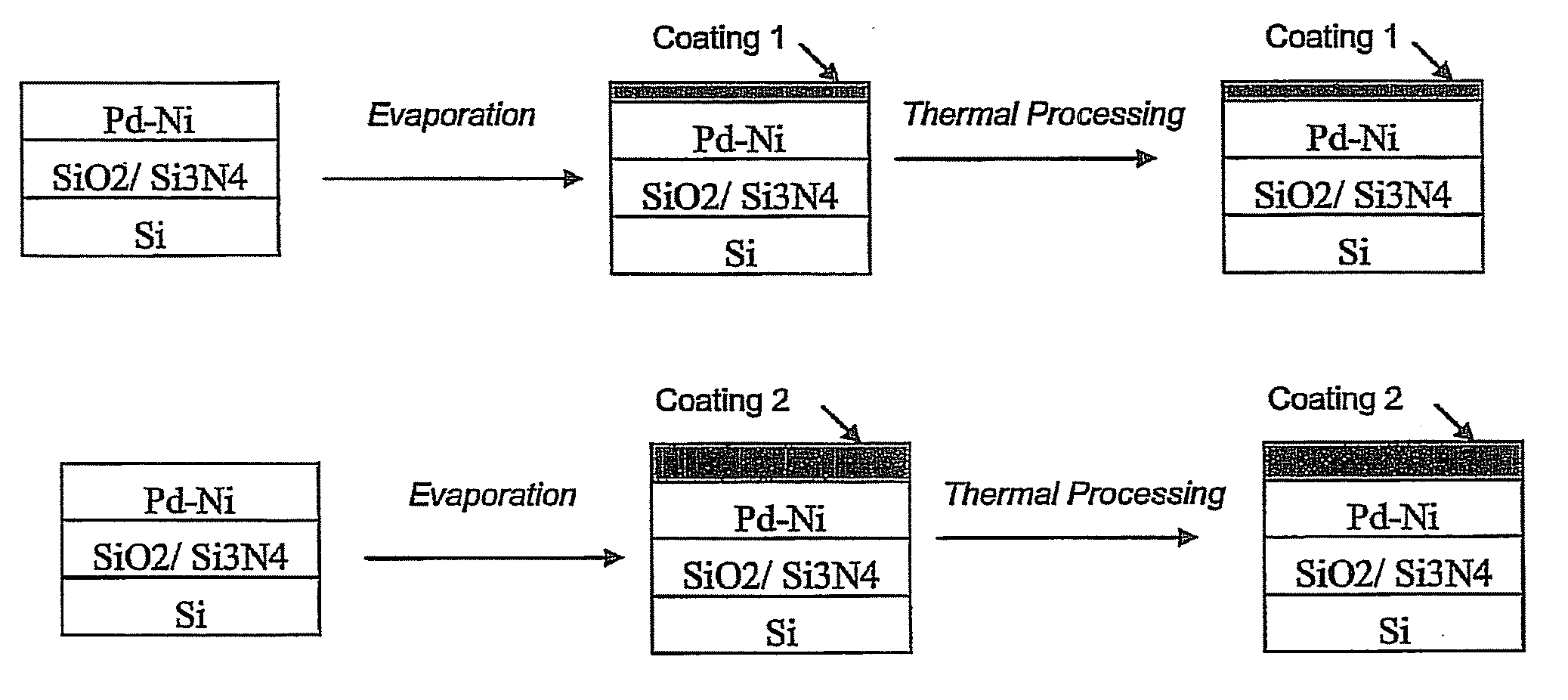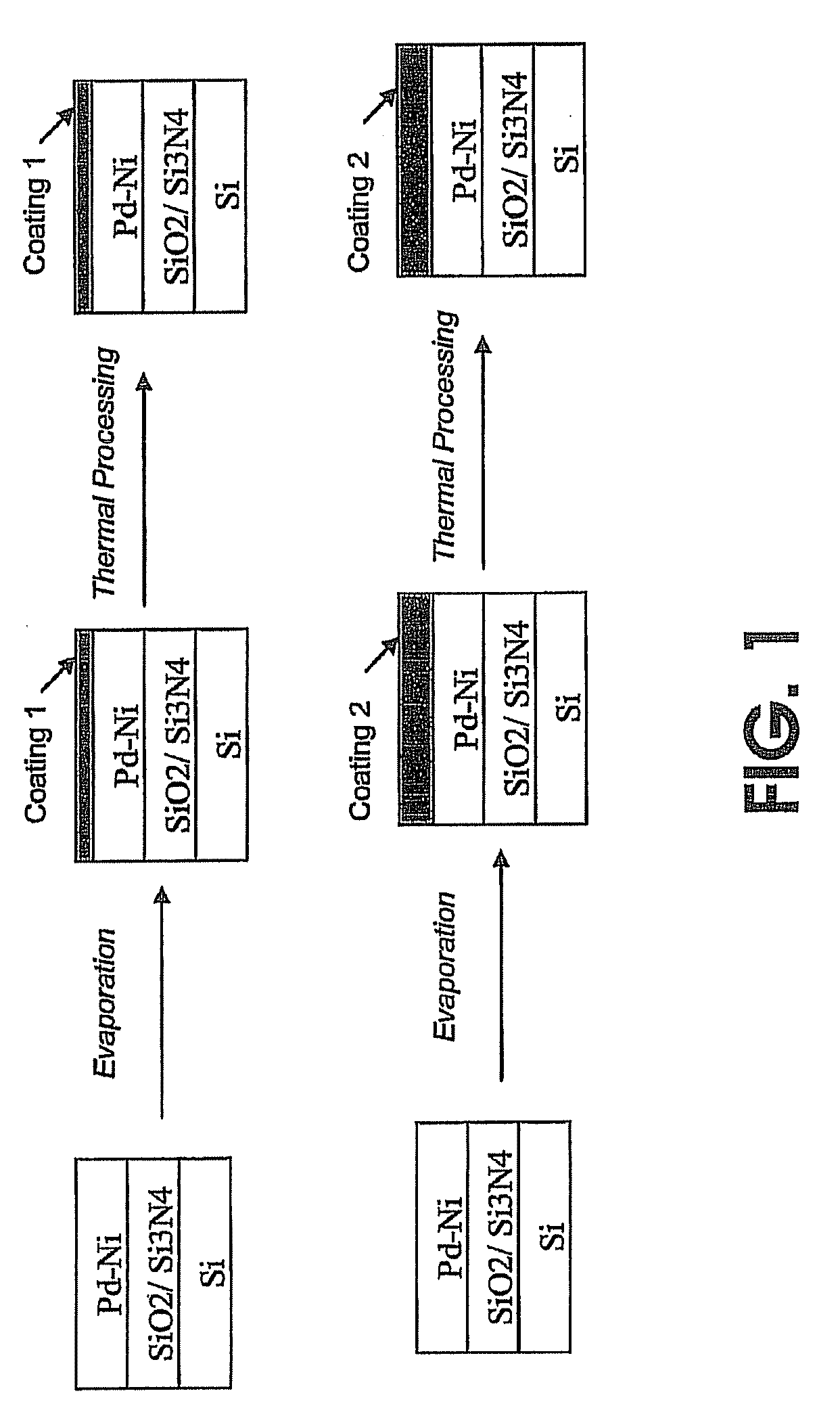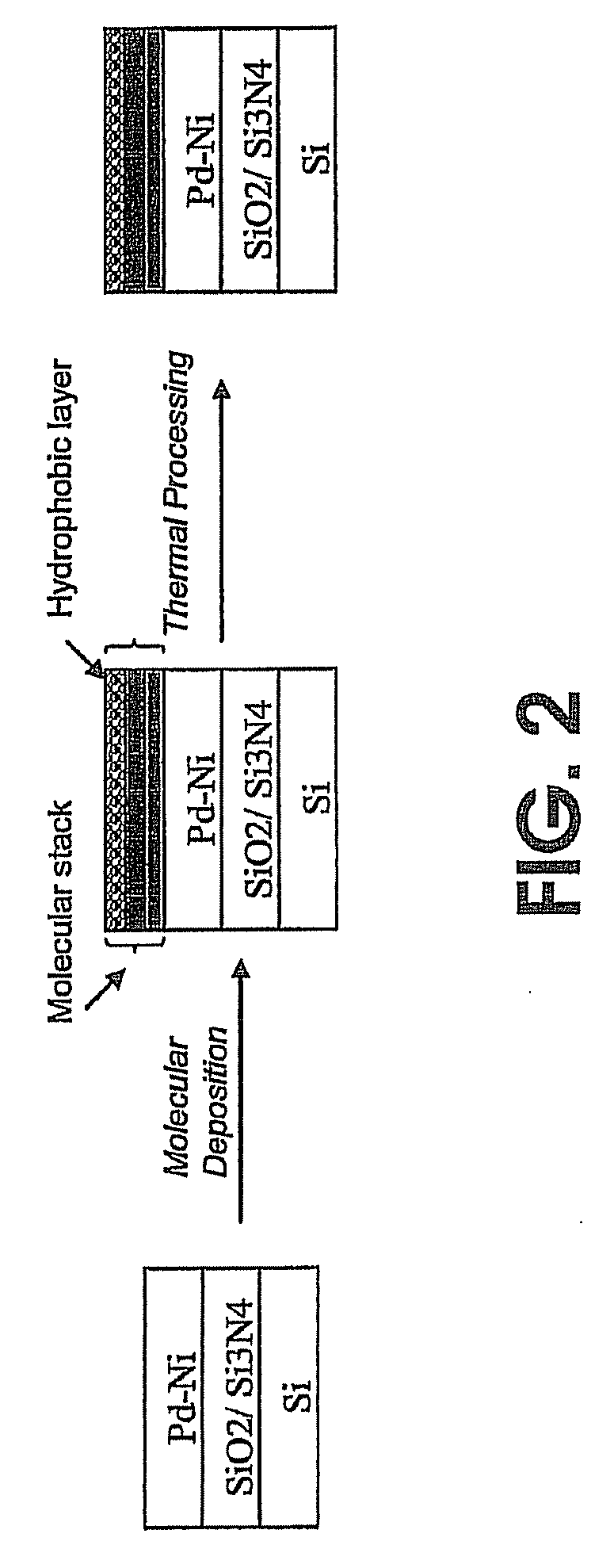Protective coatings for solid-state gas sensors employing catalytic metals
- Summary
- Abstract
- Description
- Claims
- Application Information
AI Technical Summary
Benefits of technology
Problems solved by technology
Method used
Image
Examples
example 1
SiO2 Coatings for Inhibiting H2O, H2S, CO, O2 and Hydrocarbons
[0043]A coating based on evaporated SiO2 thin film (hereinafter referred to as Coating 1) and a thermal processing technique (sometimes referred to herein as annealing) improve the conformity of the coating to inhibit contaminants and selectively allowing hydrogen permeation.
[0044]FIG. 1 shows the process for fabricating such a coating on the sensor. Coating 1 can be prepared by standard, known deposition techniques including thermal evaporation, chemical vapor deposition, plasma assisted chemical vapor deposition techniques.
[0045]FIG. 2 shows a process for preparing an improved barrier to contaminants by increasing coating thickness. The processes to increase the thickness of the SiO2 coating by thermal evaporation techniques are also known.
[0046]In the present technique, coating thickness can be selectively adjusted to limit permeation to contaminant molecules like H2S, CO, H2O, Cl2, O2, hydrocarbons and other compounds...
example 2
Inorganic Coatings Comprising Al2O3, SiO2 and Hydrophobic Coatings to Provide Additional Inhibition of H2O and O2 Penetration
[0047]The present technique also provides a molecular stack prepared by molecular vapor deposition that includes a hydrophobic layer to inhibit penetration of water molecules into the palladium-nickel hydrogen sensor surface. FIG. 2 shows the method of fabrication of the molecular stack over the sensor surface. In one embodiment, the molecular stack is built by depositing a layer of SiO2 (10 Å-100 Å) followed by a hydrophobic layer (10 Å to 100 Å). A hydrophobic material like PTFE can be used with this embodiment.
example 3
N2 Anneal at 350° C. as a Method to Provide Additional Stability for a Solid-State Hydrogen Sensor Operation in Air
[0048]The present technique also provides an annealing process at 350° C. in nitrogen backgrounds with Coating 1 and Coating 2 to improve the conformity and stability of the coatings. “Conformity” refers to densification of the coating to provide a better barrier to contaminants. FIG. 3 indicates that the penetration of oxygen molecules into the Coating 1 is reduced after the thermal annealing process. A similar effect is observed with H2S, CO, Cl2 and hydrocarbons.
[0049]Hydrogen Sulfide (H2S) Inhibition with Coating 2.
[0050]Coating 2 applied in accordance with the present technique has enabled the continuous operation of a palladium-nickel hydrogen sensor in 300 ppm H2S backgrounds. FIG. 4 shows continuous operation of the hydrogen sensor detecting 10% H2 for 70 hours in the presence of 300 ppm H2S.
[0051]The functional and performance differences are illustrated in FIG...
PUM
| Property | Measurement | Unit |
|---|---|---|
| Temperature | aaaaa | aaaaa |
| Thickness | aaaaa | aaaaa |
| Hydrophobicity | aaaaa | aaaaa |
Abstract
Description
Claims
Application Information
 Login to View More
Login to View More - R&D
- Intellectual Property
- Life Sciences
- Materials
- Tech Scout
- Unparalleled Data Quality
- Higher Quality Content
- 60% Fewer Hallucinations
Browse by: Latest US Patents, China's latest patents, Technical Efficacy Thesaurus, Application Domain, Technology Topic, Popular Technical Reports.
© 2025 PatSnap. All rights reserved.Legal|Privacy policy|Modern Slavery Act Transparency Statement|Sitemap|About US| Contact US: help@patsnap.com



